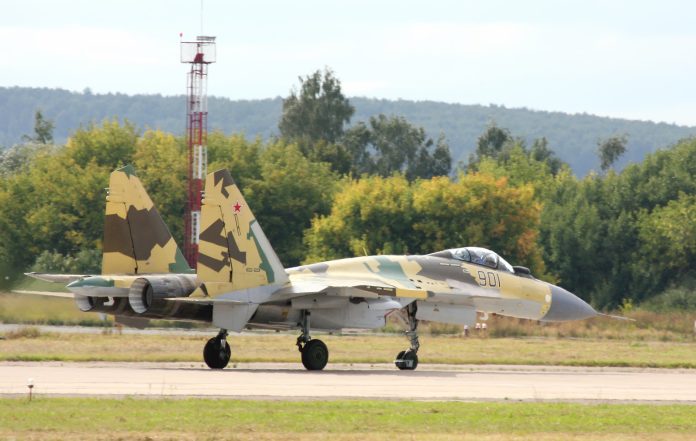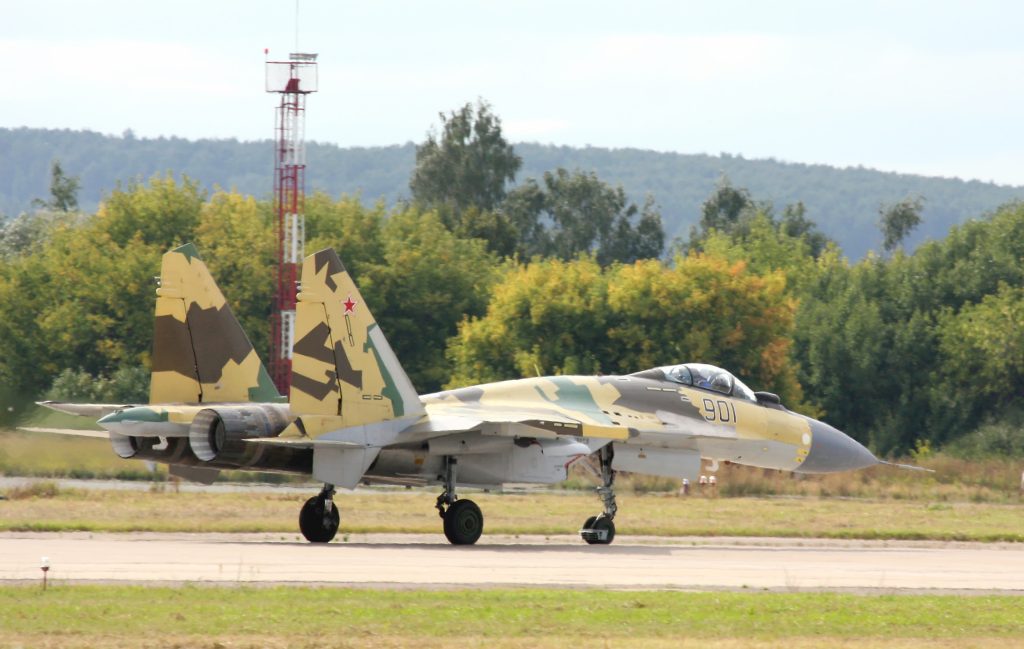
“The Su-35 is hands down the most capable fighter in [the] Russian Air Force.” But to compare it with today’s F-15E, F/A-18E/F, Typhoon or Rafale, much less ‘superior’ is reaching, aviation expert Abhirup Sengupta said in 2020. But on June 7, 2025, one of Russia’s premier aircraft plummeted from the sky, incinerated to a crisp in a field just outside Kursk a reminder to everyone that no airplane is indestructible in today’s battlefield.
This new Su-35 shoot-down by Ukrainian forces has rocked the defense establishment. A Western-supplied F-16, a wayward Patriot SAM, or an inspired mix of the two, taking advantage of high-tech overwatch? With the mist of war still hanging in the air, every new twist gives us a glimpse into the constantly shifting ratio of power and the relentless creativity propelling both sides. Below are eight valuable lessons of the accident that shed light on the future of strategic deterrence and air warfare.
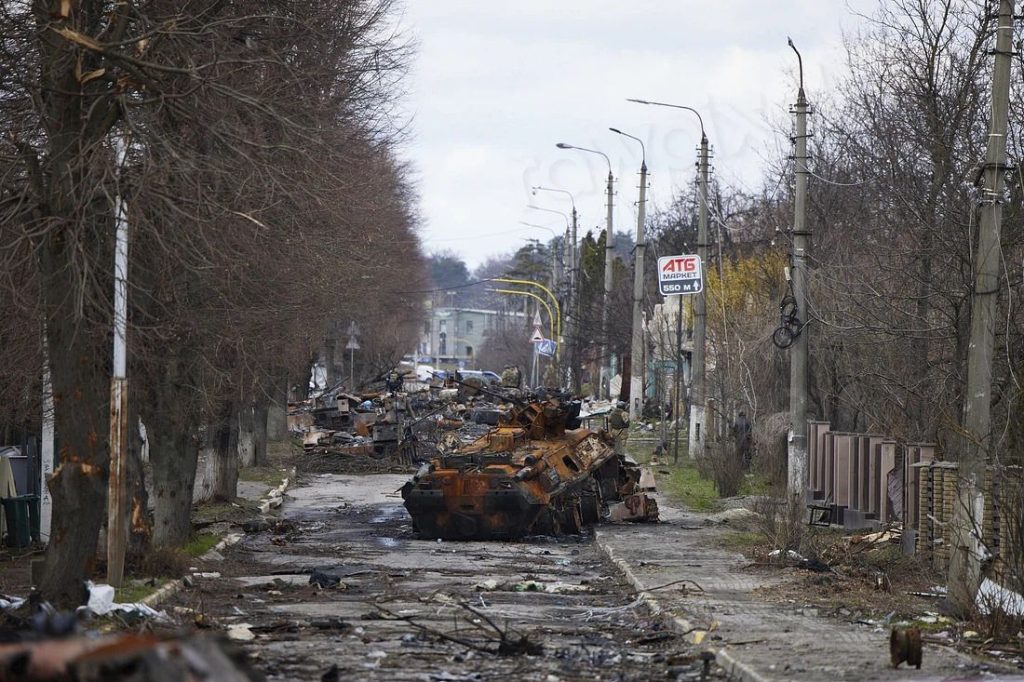
1. The Kursk Shootdown: A Turning Point in the Air War
On June 7, 2025, the Ukrainian military reported the shoot-down of a Russian Su-35 Flanker-E over the Kursk area, and it is that which most analysts recognize as a turning point of the air war above Eastern Europe. The crash of Yurasovo was verified by video and also attributed by Russian military bloggers, with the pilot surviving.
Though the official information is scarce, the loss is great not just for the loss of a state-of-the-art fighter but also because of where the loss occurred within Russian borders. As the Aviationist explains, it’s the eighth visually confirmed Su-35 lost since the war started, showing the rising price of Moscow’s air campaign. With each loss, the technological advantage of Russia and even the invincibility of its most valued assets are called into question.
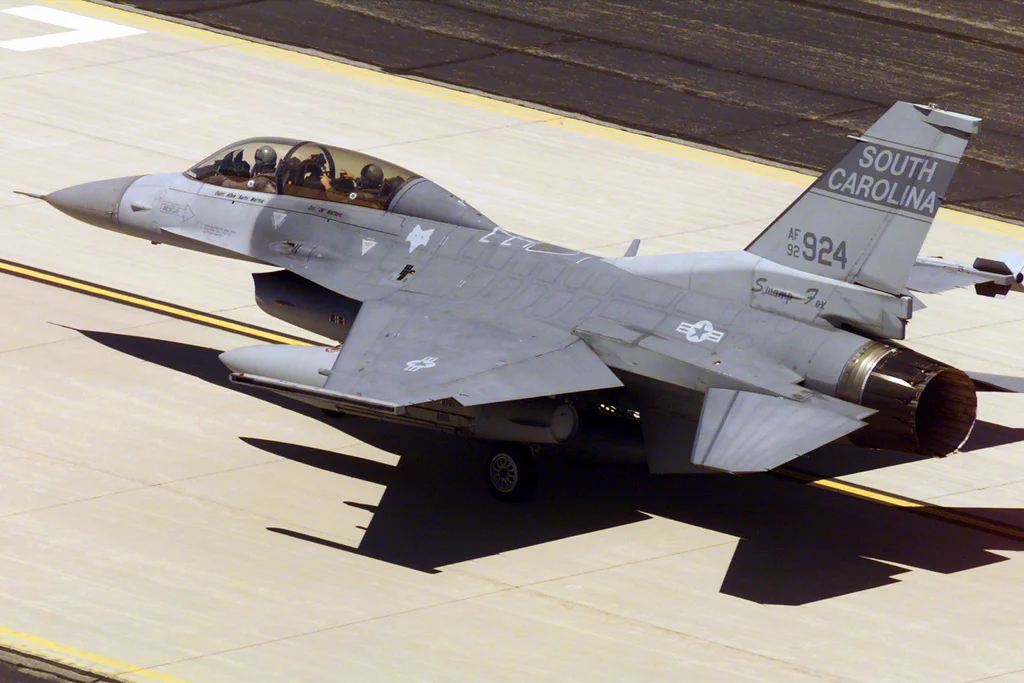
2. The F-16 Ambush: Western Fighters Join the Battle
There was speculation in its wake: did the F-16 bring down the Su-35? Reports by National Security Journal and Bild indicate that a Ukrainian F-16, armed with an AIM-120 AMRAAM missile, made a carefully practiced air ambush. It would be the first ever air-to-air Ukrainian F-16 kill, a milestone for Kyiv’s reconstituted air force, if true.
The arrival of the F-16 represents a new phase in the war, in which Western technology is not merely evident but is also shaping the outcome. The combination of American and European systems into the Ukrainian military is confronting Russian pilots with threats that, three years before, were still on paper.

3. Saab 340 AEW&C: The “Spy Plane” That Altered the Rules
One of the most important aspects of the alleged ambush was the Swedish-provided Saab 340 AEW&C aircraft. The aircraft, according to National Security Journal, picked up the Su-35 more than 200 kilometers away and transferred targeting information to the F-16.
This AEW&C protection allowed the Ukrainian pilot to fire an AIM-120 missile at range, putting him beyond the grasp of the Su-35. The exercise demonstrates the way in which network war and real-time information sharing can negate the best of the other side and reverse the Russian long-range missile superiority.
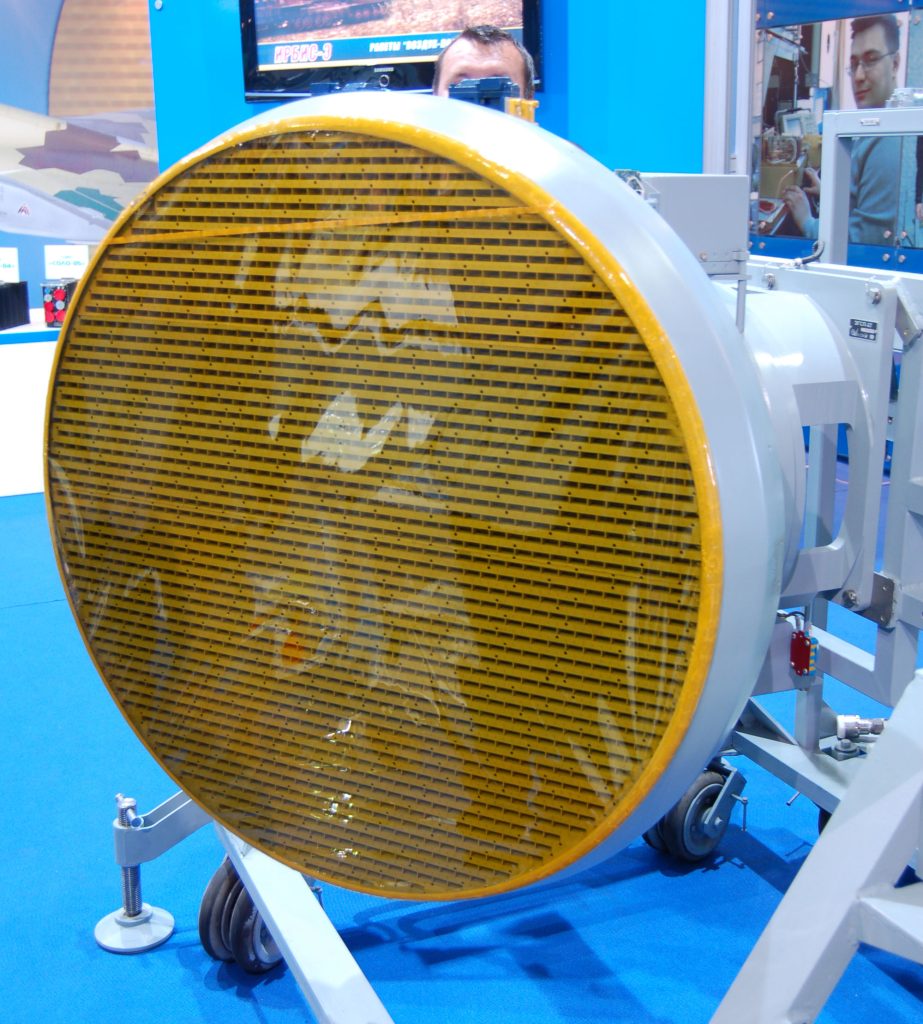
4. The Su-35 Radar: Spotted Very Nicely on Paper, but Not in Reality
Su-35’s Irbis-E radar, touted as a technological wonder, reportedly can detect targets to 400 kilometers and track 30 simultaneously. But as Centcom Citadel explains, such are capabilities that all too often fail to deliver in real-world operating scenarios. Maximum target range is actually in the range of 250 kilometers for big targets, and the system has difficulty keeping small, new fighters under surveillance at range.
In comparison with Western fighter jets fitted with AESA radars used in the West, the PESA system of the Su-35 is less jam-resistant and less successful against stealth targets or agile opponents. That was the technical gap that was brutally exposed when the Su-35 radar was said to have been disabled by Rafale SPECTRA suite during tests in Egypt a harrowing truth for Russian air planners.
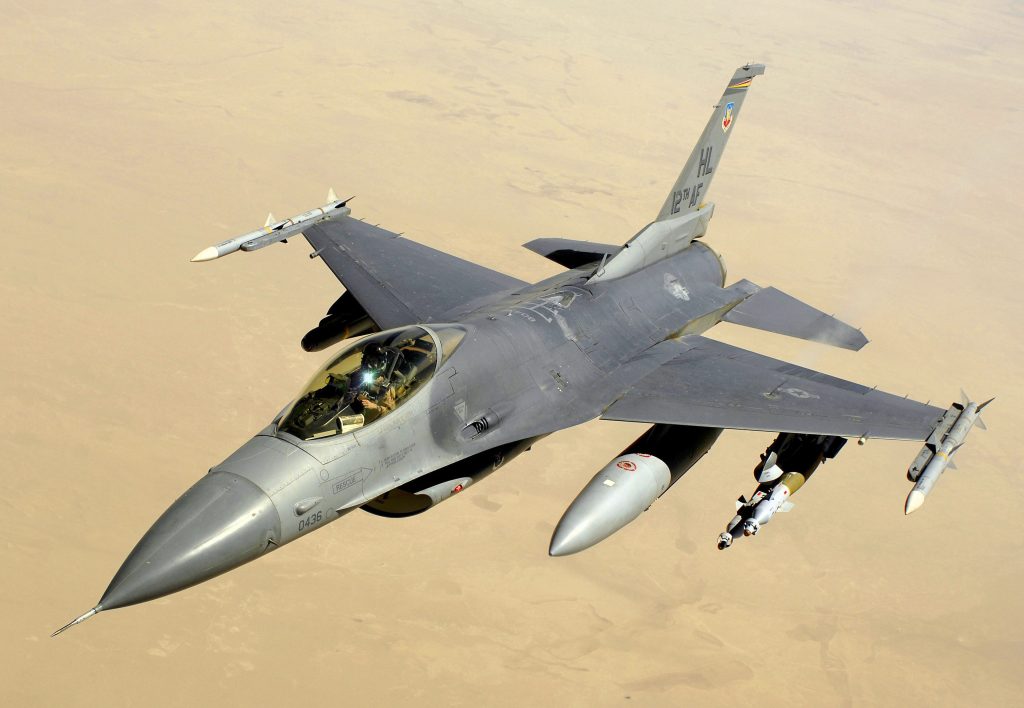
5. Mobile Patriot and SAM Ambush Tactics
While F-16 rumors steal the spotlight, there are some who think that a mobile Patriot or another air defence missile system is not to be ruled out. As Defence UA explains, the Ukrainian Air Force has, in turn, utilized “wandering” Patriot batteries moved to create unstabilized kill zones.
These strategies take advantage of the Su-35 need to enter contested airspace at close proximity, where even the latest aircraft can be surprised. The uncertainty regarding the shootdown procedure reflects the success of multi-layered, adaptive air defense systems and the challenge of assigning kills in a congested electronic battlespace.

6. Economic and Strategic Impact: $100 Million Down
Every lost Su-35 is not only a loss to the Russian air force but to its treasury. Since every aircraft costs approximately $100 million, as MSN reports, losses accumulate fast. The recent Operation Spiderweb that reportedly destroyed 41 Russian strategic planes has already cost Moscow an estimated $7 billion.
The deterrent and psychological impacts are also considerable. As Ukraine’s Western-equipped military gains strength, Russia is under increased pressure to evolve its tactics and defend its shrinking inventory of precious aircraft.
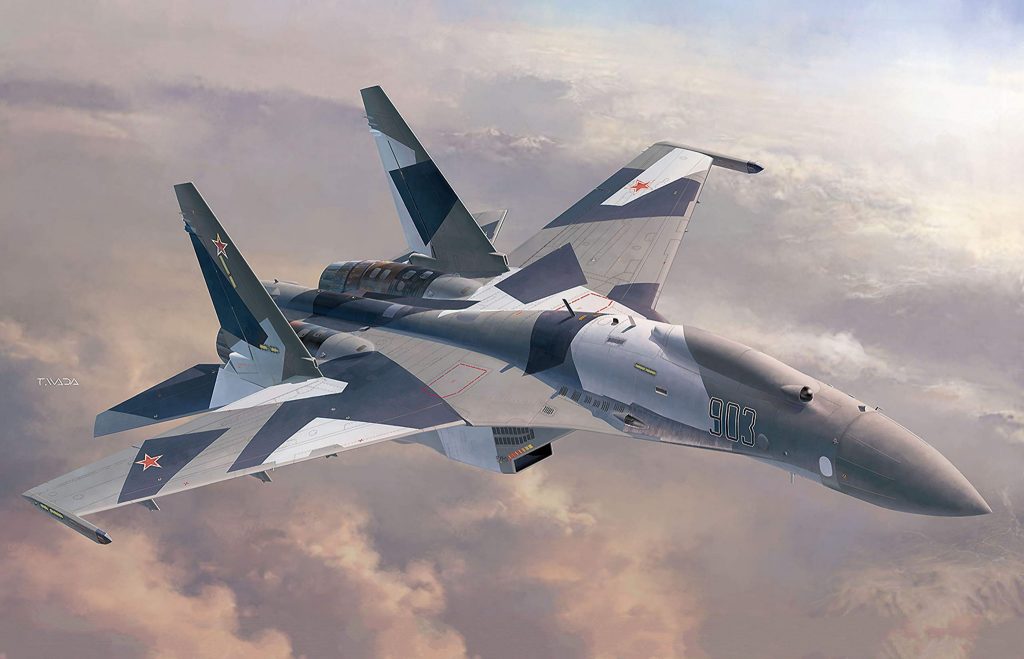
7. The Su-35’s Flaws and Strengths Exposed
Despite its glom, the vulnerabilities of the Su-35 are formidable. Its alleged supermaneuverability and state-of-the-art avionics have not prevented it from being attacked or outmaneuvered by current Western airplanes and air defenses. The National Security Journal further mentions that the Su-35’s image as a 4.5-generation fighter is impressive but not immune to the vicissitudes of modern networked warfare.
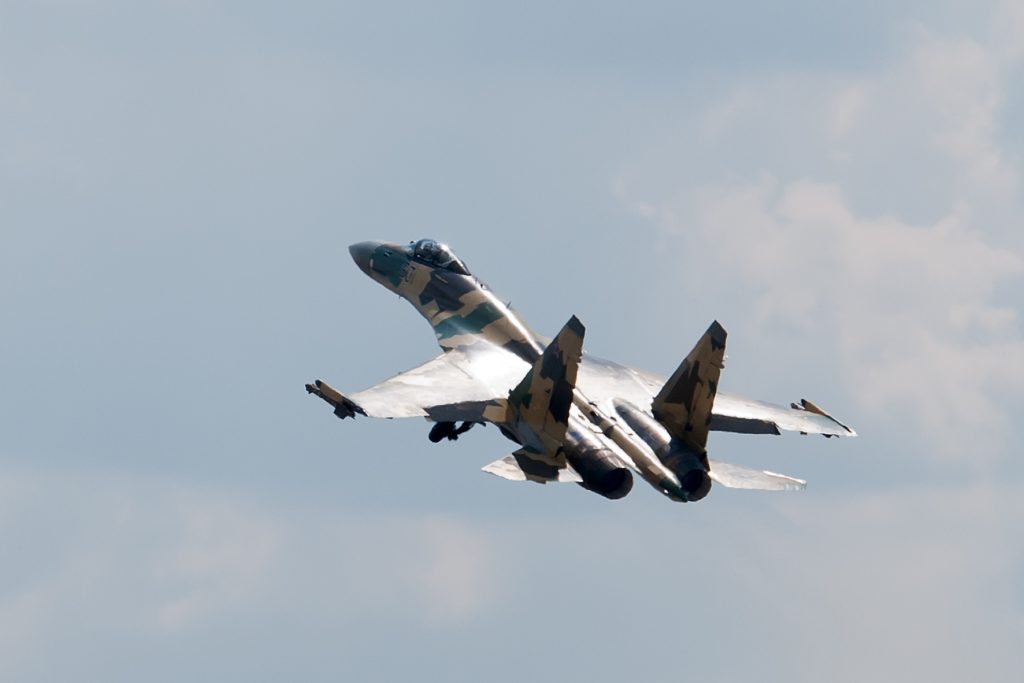
Most importantly, its IRST and missile capabilities trail Western rivals, and its non-stealth shape makes it an easy target for well-coordinated sorties. The longer the war wears on, the legend of the “Super Flanker” is being tried and, in some instances, destroyed.

8. Intelligence Windfall: Western Access to Downed Su-35s
When a Su-35 is downed and recovered, it’s an intelligence treasure trove. Western experts have already analyzed a 2022 downed Su-35 and published information on its radar and electronic warfare capabilities, SOFREP and as quoted by Centcom Citadel reported.
This access allows allied and NATO analysts to confirm or refute Russian assertions regarding the capabilities of the jet. As Justin Bronk of RUSI noted, “Any possible chance to inspect the radar equipment or electronic warfare pods on the crashed Su-35 would be useful. Such equipment can confirm or discredit available intelligence estimates of how they operate.”

The shootdown of the Su-35 over Kursk is more than a tactical victory; it is a case study of the fast development of air combat. As Western and Russian technologies blur, the lessons they are both learning about radar, missiles, electronic warfare, and the importance of networked operations are restructuring doctrines on both sides. For defense hawks and military planners, every confrontation is a live test that demonstrates not only who is leading the day, but how the air conflicts will be fought the next day.
